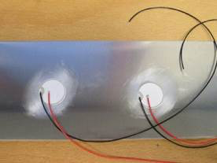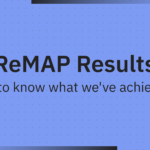1 – What are the main objectives of the work performed in the sensor technology context?
”Today the main concern of CTEC and ENSAM is to develop a LWDS (Lamb Wave Detection System) solution able to detect damages in pre-defined composite structures, as required by University of Patras and EMBRAER. This implies at first to design, build and test a LWDS electronics, to select and procure appropriate piezo patches, to define an accurate position of the patches on the structure, then to glue them on the structure.

Secondly, this hardware will be exploited to define most appropriate excitation detection parameters in either pitch catch or pulse echo technique. Thirdly algorithms will be defined and implemented as software with the goal to ensure the detection and localization of growing damages as far as possible in various conditions. “
2 – How will the research in ReMAP improve the reliability of sensor technology?

“The works on LWDS hardware as regard reliability will consist in characterizing the piezo sensors coupling with the structure and to identify unreliability sources and establish process that offer a good reproducibility and a low aging.

The assumed main sources are the glue itself because of thermal dependency and aging, and the gluing process which may introduce variations in coupling. However, some variations such as sensors dispersion or sensors thermal dependency may be managed by appropriate calibrations. For that, an auto-diagnostic based on the measurement of the sensor electric impedance can provide a way to check the coupling with the structure is still satisfying and to calibrate the sensor. These calibrations could be implemented in the software in addition to other functions.
For example, the software might allow to support one fail sensor to provide the required SHM in a reliable way by exploiting all other sensors. Then, if the LWDS complete system is fault tolerant, the SHM would become highly reliable.”
3 – What is the importance of your work in the overall ReMAP solution?
“The LWDS is a SHM solution able to detect and monitor some damage growth in composite structure that cannot be detected by other techniques. It will be required to implement this monitoring on all Aircraft parts subjected to wear and exposed to impacts, in order to permit a Real-time CBM for Aircraft.”
4 – What are the main challenges you are facing so far? (e.g., technically, procedural/ organization, procurement)
“Today the LWDS hardware has been developed to get rapidly a platform for algorithm and software development. Efforts are done to add functionalities in the electronics to offer the maximal flexibilities to allow such development. In parallel, works are starting to assess the piezo coupling for sensor reliability. The challenge will be to find the right gluing process to get a good reproducibility.

Later, one usual difficulty is to generate well-defined and reproducible damages such as delamination to test and improve the LWDS. In a longer term, the main challenge for the development of the LWDS will be to make it applicable to very various structural parts and damages and to ensure it detect all types of damages including small one. Lamb waves propagation depends on the skin thickness and the presence of stiffeners, in addition to strong frequency dependence. This offers in principle a way to tune the LWDS to the situation, but in practice, the number of situations to manage is maybe larger than can be analyzed in ReMAP framework. Besides these hardware features, the challenges are mainly related with SHM algorithms and the number of active elements as PZT to enables the detection of different damages with small sizes on different materials.”
For our French readers, this article gives an overview of the work implemented by CTEC .






